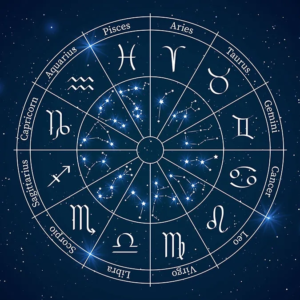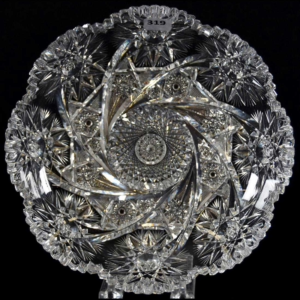Indigolite Stone – properties, virtues & benefits
Discover the Indigolite stone, a captivating gem with deep blue hues. Appreciated for its energetic properties and beauty, Indigolite brings harmony and serenity to those who wear it. Immerse yourself in the fascinating world of this rare and precious gem.
INDIGOLITE CHARACTERISTICS
- Chakra: Throat, Third Eye.
- Properties: Harmony, Communication, Intuition.
- Astrology: JuPiter.
- Zodiac: Taurus, Libra, Aquarius.
- Elements: Water, Air.
- Colors: Deep blue, Blue-green.
- Hardness: 7-7.5 (Mohs scale).
- Chemical Formula: Na(Li,Al)3Al6(BO3)3Si6O18(OH)4.
- Associated god: None.
INDIGOLITE – ITS HISTORY
Tourmaline is a stone highly prized by collectors and gem enthusiasts worldwide due to its unique characteristics related to its grade, size and weight. It can exhibit almost any color in the spectrum, and legend has it that it has passed through a rainbow, which explains its wide variety of colors. Tourmaline is the October birthstone and represents fifty-two years of marriage.
In the 16th century, a Spanish conquistador discovered a green Tourmaline in Brazil that he mistook for an emerald. For many decades, Tourmalines were often mistaken for other precious and non-precious stones due to their wide variety of colors. However, in the early 19th century, science was finally able to identify Tourmaline’s specific composition and characteristics. Since then, the Tourmaline family has become very popular, and their name derives from the term “Turamali”, which means “mixed gems” in Sinhalese, the official language of Sri Lanka, where this stone originated. Blue Tourmalines are the rarest and most expensive of all Tourmalines.
INDIGOLITE STONE – ITS ORIGIN AND COMPOSITION
Blue Tourmaline is also known by the names “Indigolite” or “Indicolite”, which refer to its blue hue. It belongs to the Silicate category and is currently found in Brazil, Nigeria and Afghanistan. Commercially available rough blue tourmalines generally weigh between 0.7 and 1.8 grams, and have an average size of around 1 cm long by 0.7 cm wide. Their color varies from light to dark blue, with shades of green, but their hue is always brilliant. On the Mohs scale, which measures mineral hardness, they range from 7 to 7.5. Their chemical composition includes sodium, lithium, calcium, manganese, magnesium, aluminum and iron, the latter being responsible for their blue color.
Blue Tourmaline has unique electrical properties and can be polarized, with its state changing according to ambient temperature. The stone attracted the attention of physicist Curie and is now used in the nuclear field for its protective capacity.

INDIGOLITE STONE – VERTIES AND PROPERTIES
Blue Tourmaline has electrical characteristics that make it highly effective in protecting against harmful surrounding waves. When worn as a bracelet, it can offer some protection against emissions from everyday electrical appliances. Therefore, it can be useful to place this gemstone near sensitive areas of your home, such as the Internet box, TV or computer.
PHYSICAL INDIGOLITY
Blue Tourmaline, also known as Indigolite, is associated with the throat chakra. It can help ease tension and conflict, and is therefore considered the stone of peace and harmony. It can play an important role in family, friends, social and professional relationships, develoPing listening skills and altruism. It can also help reveal internal problems and resolve unconscious inner conflicts, which can be useful for people with psychosomatic disorders or for theraPists. Wearing Blue Tourmaline can improve morale and develop psychic faculties such as intuition.
In chakra terms, Blue Tourmaline also acts on the third eye chakra, which is associated with wisdom and intuition. This influence is reinforced by the stone’s dark color. It promotes harmony of being in one’s environment and enables greater sPiritual freedom by eliminating impediments to progress, such as melancholy, inhibitions or fears.
In addition to these properties, Blue Tourmaline has electrical properties that help protect against negative waves emitted by household appliances such as computers and televisions. It is therefore very useful in geobiology for protecting sensitive areas of the home.
PHYSICAL INDIGOLITY
On the physical plane, Blue Tourmaline, or Indigolite, acts primarily on the throat chakra, with a greater influence when its color is light. It strengthens the larynx and thyroid, stimulates the thymus and boosts the immune system in general, which can help resist illness. It can also strengthen the vocal cords to treat locution disorders. In general, like all Tourmalines, it has a beneficial effect on nervousness, muscular pain, toothache and bone problems. It can also improve digestion and have a beneficial effect on conditions such as ePilepsy. It promotes better quality sleep, improves blood circulation and reduces hormonal imbalances.

INDIGOLITE STONE – CLEAN AND RECHARGE
To clean and recharge your Indigolite stone, follow these simple steps:
- Physical cleaning: use a slightly dampened soft cloth to gently clean the stone surface to remove dust and impurities.
- Energetic cleaning: place the Indigolite stone in a bowl of distilled or demineralized water with a Pinch of unrefined sea salt. Let it soak for about 30 minutes to eliminate accumulated negative energies.
- Rinsing: Remove the stone from the salt water and rinse thoroughly with clear water to remove any salt residue.
- Recharging: To recharge your Indigolite, place it in the moonlight, preferably on a full moon night, for several hours. You can also recharge it by placing it on a quartz or amethyst cluster for a whole day.
- Programming: Once the stone has been cleaned and recharged, hold it in your hands and concentrate on the intention you wish to give it. Visualize the energy of your intention penetrating the stone.
After these steps, your Indigolite will be purified, recharged and ready to be used again to bring you harmony and serenity.
WHERE DOES THE NAME INDIGOLITE COME FROM?
The name “Indigolite” comes from the characteristic color of this gemstone, which features deep blue shades reminiscent of indigo. The term “indigo” is itself derived from the ancient Greek word Ἰνδικὸν (Indikon), meaning “from India” or “Indian dye”, referring to the dark blue dye obtained from the Indigofera tinctoria plant, grown in India and other regions. Indigolite, being a blue variety of the tourmaline family, takes its name from this unique and captivating color.
WHICH CHAKRA DOES INDIGOLITE ACT ON?
Indigolite acts primarily on two chakras: the throat chakra (Vishuddha) and the third eye chakra (Ajna).
- Throat chakra (Vishuddha): Located at the throat, this chakra is associated with communication, self-expression and creativity. Indigolite helps to unblock and balance this chakra, facilitating clearer, more authentic communication with oneself and others.
- Third eye (Ajna) chakra: Located between the eyebrows, this chakra is linked to perception, intuition and clairvoyance. Indigolite strengthens the connection with the third eye, helPing to develop better intuition and expanded awareness.
Working on these two chakras, Indigolite promotes harmony, serenity and sPiritual growth for those who use and wear it.
WHICH ASTROLOGICAL SIGN IS ASSOCIATED WITH INDIGOLITE?
Indigolite is particularly associated with three astrological signs: Taurus, Libra and Aquarius.
- Taurus: People born under the sign of Taurus can benefit from Indigolite to strengthen their emotional stability and ability to communicate their feelings and thoughts.
- Balance: Librans, who often seek balance and harmony in their lives, can take advantage of Indigolite’s energy to improve communication and understanding in their relationships.
- Verseau: Aquarians, who are often forward-thinkers and independent thinkers, can use Indigolite to stimulate their intuition, creativity and ability to innovate.
INDIGOLITE STONE SUMMARY
Indigolite stone, also known as indigo stone, is a variety of tourmaline characterized by its dark blue to intense violet color. It owes its color to the presence of iron and manganese in its crystalline structure.
The indigolite stone is considered a rare gemstone and is often used in jewelry. It is also renowned for its healing and sPiritual properties, including helPing to combat stress, depression and irrational fears.
According to lithotherapy, indigolite stone acts on the throat chakra, promoting communication and self-expression. It is also associated with the third eye chakra, promoting intuition and clairvoyance.

